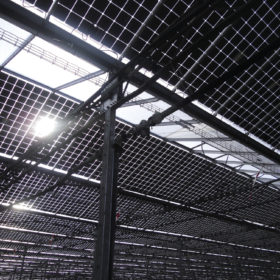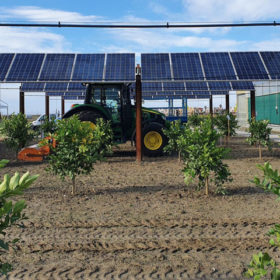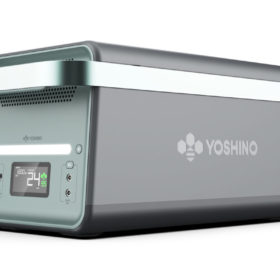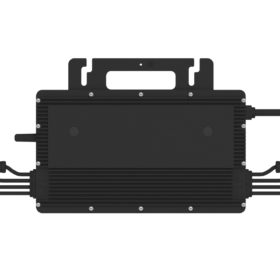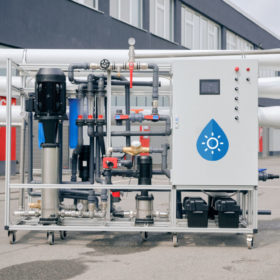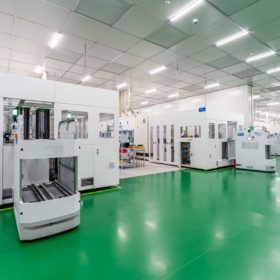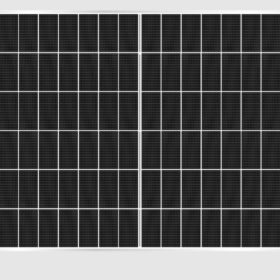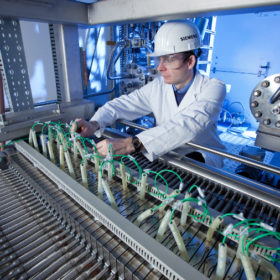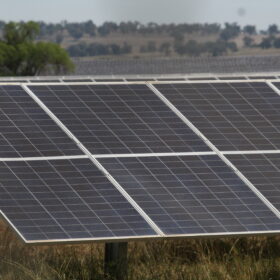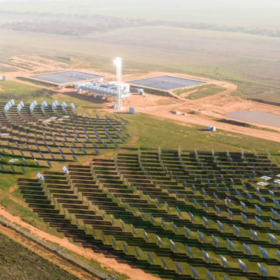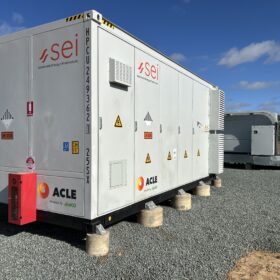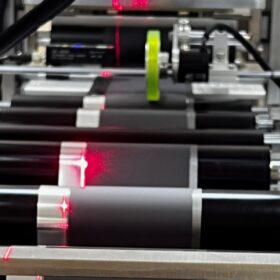New method to measure energy yield of bifacial PV systems
Canadian scientists have developed a new way to measure the energy yield of bifacial PV systems. They said they considered the spectral albedo of ground cover like snow and sand to predict energy gains of up to 2%, in comparison with the International Electrotechnical Commission (IEC) standard.
Adapting agrivoltaics to different climates, crops
An international consortium led by Italy’s Eurac Research launched the Symbiosyst project to adapt PV modules, mounting structures, and maintenance technologies to the needs of various crops in agrivoltaic installations in different climates.
New residential battery inverter solution from China
Esysunhome (ESYSH), a new energy storage company in China, has developed a 5.12 kWh lithium iron phosphate (LFP) battery system with a 7.9 kW inverter. It says six modules can be combined for up to 30.72 kWh of energy storage capacity.
U.S. startup unveils portable solid-state lithium-ion battery for residential use
California-based Yoshino Technology has developed portable batteries using solid-state Li-NCM cell technology. The four variants come with power outputs of 330 W, 660 W, 2,000 W, and 4,000 W.
Hoymiles reveals microinverters for high-power PV modules
Chinese manufacturer Hoymiles has developed a new line of microinverters with up to 96.7% efficiency and outputs of up to 2,000 VA. It said they can be connected with up to four high-power solar modules.
Solar-powered water desalination tech for off-grid applications
Berlin-based Boreal Light has developed water desalination tech powered by PV for off-grid applications. The solution uses 460 W solar panels from Chinese module manufacturer DAH Solar and produces clean water from direct seawater at a cost of €0.50 ($0.78)/m3.
Trina Solar starts producing 210 mm n-type TOPCon solar cells
Trina Solar says its industrial tunnel-oxide passivated contact (i-TOPCon) solar cells, based on 210 mm wafers, have started rolling off the production line at its 8 GW factory in China. It will use the n-type cells to produce its new Vertex N modules, with power outputs ranging up to 605 W, and an efficiency rating of 22.4%.
Huasun unveils 715 W heterojunction solar module
Chinese manufacturer Huasun launched a new line of five heterojunction (HJT) solar modules in 2022, with power outputs ranging from 680 W to 700 W. The company has now added a new 715 W module to the series.
New electrolyser to split saltwater into hydrogen
Chinese scientists have developed a new way to split seawater into hydrogen without using a separate desalination process. They incorporated a self-breathable waterproof membrane and a self-dampening electrolyte (SDE) into the electrolyser, so water migrates from the seawater across the membrane to the SDE, without extra energy consumption.
BIPV shading estimation methods key for uptake, says IEA-PVPS
A recently published report from the International Energy Agency’s Photovoltaic Power Systems Programme on building integrated photovoltaics (BIPV) digitalisation found many industry professionals are unsure of a suitable method for estimating shading in BIPV projects.
